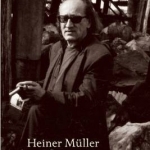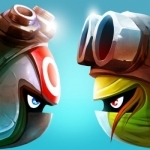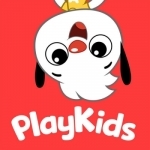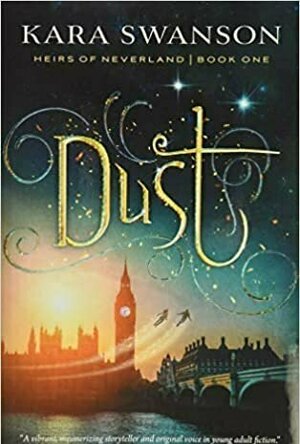
Ovia Baby Development Tracker
Medical and Health & Fitness
App
***The must-have app for first-time moms and parents everywhere*** Ovia Parenting is a completely...

One Night Stand - Adult Hook up Tonight
Lifestyle and Social Networking
App
One Night Stand is looking for someone who wanna find a dating with top hot singles and love...

Heiner Muller After Shakespeare: Macbeth and Anatomy of Titus -- Fall of Rome
William Shakespeare, Carl Weber and Heiner Muller
Book
Heiner Muller After Shakespeare makes available for the first time Macbeth and Anatomy Titus Fall of...
TravelersWife4Life (31 KP) rated Dust (Heirs of Neverland, #1) in Books
Feb 24, 2021
Wholly Guacamole was this a captivating book! Take it from someone who was pretty indifferent to the tale of Peter Pan and his adventures before this book, that you will be immersed in a world full of life, dreams, and the pursuit of finding a family. This is Kara Swanson’s first book in her Heirs of Neverland series, and I already can not wait to get my hands on the second book! Dust was AMAZING!
<b>“Play it safe, you mean. I’ve never wanted to be safe Lily. I want to stop hook and save Neverland- even if that means a bit of danger. A smirk tugs at my lips. “Especially if it means danger.”- Peter Pan</b>
The characters in this story were unlike any I have encountered before. They were very real and raw, talking about issues outside of the realm of make-believe and “Magic”, and dealing with them in very lifelike ways. The characters do not fit the mold for Peter Pan and his gang, which I thoroughly loved. Peter had such growth through the story that it was almost tangible. Claire was dreamlike and I enjoyed seeing her unique perspective of Peter and Tiger Lily. I believe Claire is a very relatable character and I am so excited to see where Kara Swanson leads her in the next book. Plus, I loved the hint of romance between Claire and Peter; I am a sucker for a sweet coming of age romance. Both main characters show tremendous growth by the end of the story, Peter maybe a new favorite of mine in terms of character growth and self-reflection.
<b>“His whole face lights up with delight, like a child inviting a grown-up to see a new creation they’ve made. He’s inviting me into his world.” – Claire</b>
The setting for this book is partially the US and then moves to London, which is to be expected; I mean how can you tell the story of Peter Pan without Big Ben? It flows beautifully with Kara Swanson’s edgier tale of Peter and the Lost Boys. From dancing fairies to the feeling of gliding through the air Kara Swanson describes the actions and emotions of the characters in vivid detail making me feel like I was gliding alongside Peter ready for any adventure to come our way. I truly enjoyed this tale and cannot express my anticipation for the next book in the series to release!
I give this book 5 out of 5 stars for the amazing characters, the great twist on a classic tale, and for making me like the story of Peter Pan and the adventures of Lost Boys. I will definitely be reading my kids this story someday, much better than even the original!
<b>“You were created for more than to bear the weight of your shadows- but you have to choose to no longer let them define you. You have to choose to let the light shine through the shattered pieces.” – Tiger Lilly</b>
I could go on forever quoting this book…so you can check out my <a href="https://www.instagram.com/travelerswife4life/">IG</a>; or <a href="https://twitter.com/TravelersWife4L">Twittert</a>; for some more amazing quotes!
*I volunteered to read this book in return for my honest feedback. The thoughts and opinions expressed within are my own.

Elephant Simulator
Games and Education
App
Enter into the wild savanna and live the life of an Elephant! Explore a vast world filled with...

Radio y Podcast iVoox
News and Music
App
With iVoox you can listen, share and download podcasts, radio shows and much more for free, whenever...

Battle Bay
Games
App
A real-time multiplayer battle arena in your pocket. Choose a ship, slap some guns on it and take to...

Strawberry Shortcake Ice Cream
Entertainment and Education
App
Create and serve tasty treats in your own ice cream truck on an island paradise! Budge Studios™...

PlayKids - Cartoons for kids
Education and Entertainment
App
PlayKids is the #1 children’s app in more than 25 countries. Kid Safe Toddler App. Kids and...

